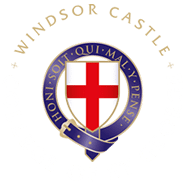On 28 March 1924, the day after the death of the renowned organist Sir Walter Parratt, the Dean and Canons of Windsor resolved to offer the post of Organist and Choirmaster at St George’s Chapel to Sir Henry Walford Davies. Walford Davies had served five years as a chorister at Windsor under the tutelage of Sir Walter Parratt, whom he much admired. He had since distinguished himself as a composer and performer of church music, studying under Hubert Parry and Charles Villiers Stanford at the Royal College of Music and serving as Organist and Choirmaster at the Temple Church in London from 1898 to 1919. Yet, despite his fond memories of Windsor, Walford Davies did not accept the post at St George’s in 1924. It was not an easy decision, as he wrote to the Reverend Edmund H. Fellowes, a Minor Canon at St George’s whom Davies considered a friend: ‘I’ve thought uphill and downdale, and I am now sure that I must not accept dear Windsor, or the post which w[oul]d have brought us two into such lovely companionship’. Having assumed the Professorship of Music at the University College of Wales, Aberystwyth, and the Chairmanship of the National Council of Music for Wales, he did not feel it a propitious time to move away from Wales.
Fortunately for the Dean and Canons, Fellowes was on hand to fill the vacancy at Windsor until such time as a successor to Parratt could be found. A distinguished music scholar in his own right and a committed practical musician, Fellowes was willing to act as an interim director of music, drawing up the weekly service lists and training the choir, in addition to his duties as Minor Canon. Meanwhile, whilst the Chapel was undergoing major renovations, including the removal of the Chapel organ, the choir was accompanied on a small replacement organ played by Malcolm Boyle, a former chorister and organ pupil of Sir Walter Parratt, who later became organist of Chester Cathedral. Walford Davies was pleased to offer his advice to Fellowes on the instruction and direction of the choir, by letter and in person (‘I long to come and take a practice for you’ he wrote in April 1924) and this situation continued to everyone’s apparent satisfaction until 1927, when Walford Davies decided, after all, to take up the position of Organist at St George’s.
Letters deposited in the St George’s Chapel Archives in 1995 by Dr Watkins Shaw (SGC M.165/1-16) indicate the problems which arose as soon as Walford Davies decided to take up the post at Windsor, following an illness serious enough to confine him to a nursing home and to force his resignation from his Professorship at Aberystwyth. In an undated letter, Davies wrote of his sadness at finding himself and Fellowes seemingly at cross purposes, assuring his friend that ‘if I come it must be to fulfil and not to displace all the good that has been done in the dear place’. However, differences in opinion, style and temperament were to cloud the relationship with Fellowes of which Davies had such high hopes. In relinquishing the direction of music whilst remaining a Minor Canon, Fellowes found that he and his successor held increasingly divergent views on the nature of the choral service and often regretted Walford Davies’ selection of music at Windsor. He was not alone in this, Charles Hylton Stewart, a fellow organist, expressing similar disquietude at Davies’ choice: ‘The [music] list you sent is the limit, Even Croft & Greene are represented by feeble things. What can be done? Such an example!’
Sir Henry Walford Davies achieved several successes during his time at St George’s Chapel, the most notable of which was the commissioning and installation of a new, twin console Rothwell organ, which was inaugurated at a morning service on 4 November 1930. Davies composed a Te Deum for double choir and orchestra for this celebratory occasion, which was held in the presence of King George V and Queen Mary, and was gratified to receive a gracious message from their Majesties’ expressing their warm appreciation of the music performed at the service under his direction. However, irreconcilable differences in approach between the more traditional Dean and Canons and the flamboyant musician, led to an inevitable parting of the ways. On receiving the Organist’s resignation at a meeting on 29 November 1931, Chapter minuted that ‘while regretting the resignation of Sir Walford Davies, they do not question the wisdom of his decision and accordingly accept it with a sense of deep gratitude for his services to St George’s throughout an important period in its history’. His successor, Charles Hylton Stewart, whom Chapter described as a ‘devout Churchman …whose patience, tact and singular charm of manner won him the instant affection of all the members of the Foundation’ could not have been a greater contrast. Sadly Hylton Stewart’s employment at Windsor lasted only 3 months, brought to a sudden end by his death in November 1932 after a short and severe illness. Dr. Fellowes was again asked to step in to direct the choir until the arrival of the new Organist, William Henry Harris, in 1933.
Clare Rider, Archivist and Chapter Librarian
